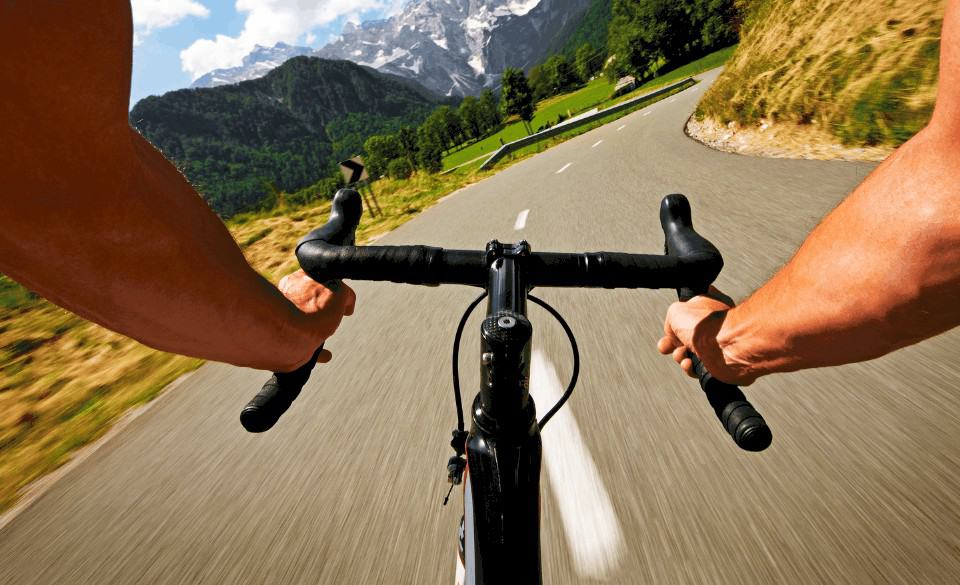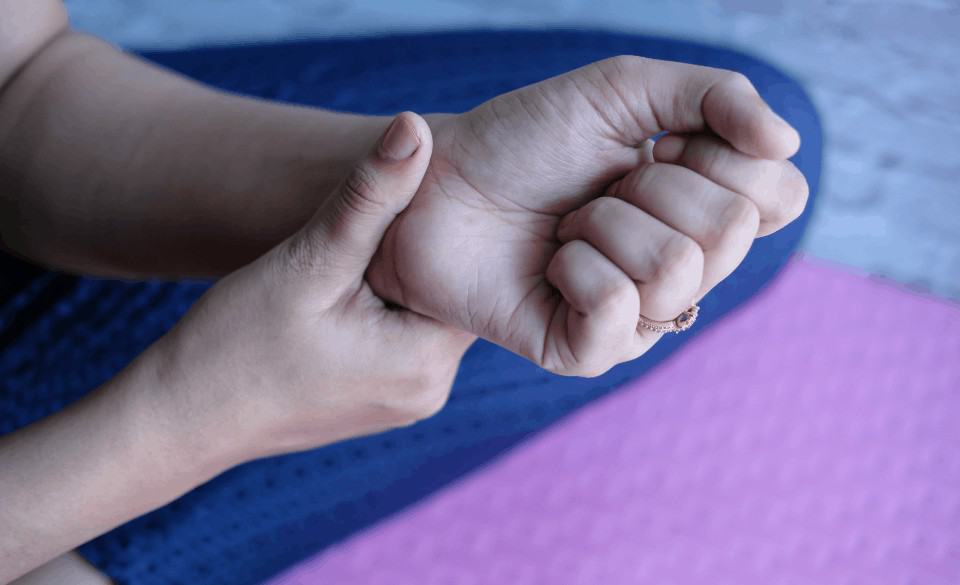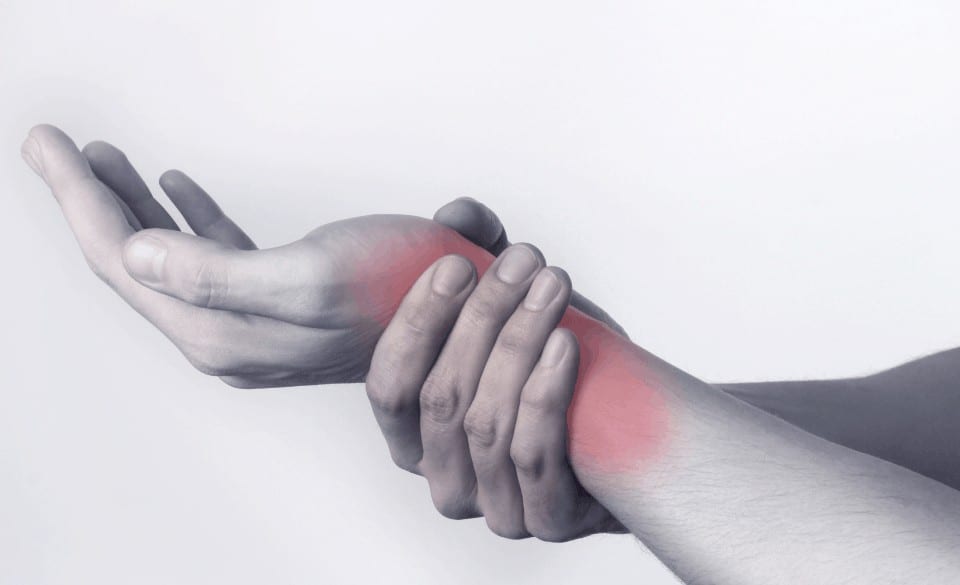
Handlebar Palsy & Cyclist Palsy – Recovery, Exercises & Prevention
Page Contents
Cycling is a fun and healthy sport, however, if your position on the bike is not adequate riders can experience handle palsy or often know as cyclist Palsy.
Cycling even though is a non weight-bearing exercise it can still take a toll on the body through poor posture on the bike. If you experience handlebar palsy take a trip to the nearest bike fitter who may be able to relieve the pressure through the proper bike position.
In this article, we take a look at the reason behind handlebar palsy and solutions to prevent this.
Handlebar Palsy – A Complete Guide
Handlebar Palsy is a condition many cyclists have faced at one time in their cycling career. Often cyclists that train long-distance experience pins and needles, loss of sensation around the pinky finger area. It is also not uncommon for these cyclists also to experience decreased muscle strength in that area also.
The reason many cyclists experience this is due to the compression of the ulnar nerve. This is more common in road cyclists because of the shape of the handlebar on road bikes. Traveling from the wrist to the shoulder, the nerve provides the movement in the hand.
When compression of the nerve happens it is unable to conduct nervous system signals. The cyclist then experiences pain, discomfort, and numbing. The cyclist then often needs to shake the affected hand for relief.
Often this feeling doesn’t last more than 10 minutes, although symptoms can last upwards of 6 weeks if the nerve is compressed over long periods of time, or rest is not adequate to allow recovery.
If this is a common occurrence when out riding modification to your bike fit is essential and in worse cases, accessory support is needed around the hands.
Usually, Handlebar Palsy can be fixed with adjustment to either the saddle fore-aft or adjustment in the handlebar angle. The cause of this comes from too much weight located on the hands, and this stems from the fore-aft position of the saddle.
Moving the saddle backward can be the first step in removing weight from the hands. The second step is then to adjust the angle of the handlebars so the platform the hand sits on next to the brake levers is level.

Cyclist Palsy – What You Should Know?
While handlebar Palsy is located around the pinky finger, cyclist palsy is pain and/or numbness that can occur in various locations of the hand. Such areas as the wrist, ulnar side of the hand, and the thumb side of the hand experience this the most.
The numbness, pain, and/or tingling sensations are caused by too much pressure on the hands and nerves, compressing the blood vessels along with it. The wrist on the other hand when held in an extended position for too long can stretch the soft tissue as well, causing some of these symptoms
While these are the main causes, insufficient core muscles, and poor bike position are a cause of the issue as well.
If you are a cyclist that has fitted by a professional bike fitter and still experience these symptoms then the cause can come from over-inflated tires and the width of the tire, causing vibrations in the hands.
Just like handlebar Palsy the feeling of numbness, pain, and tingling should not last longer than 10 minutes. If you are experiencing hours or days with a feeling of numbness in the hands, it is important to go see your bike fitter immediately and look to implement some exercises and stretches into your training.
Remember symptoms of Cyclist palsy can vary from person to person. It all depends on the severity of the condition.
Cyclist Palsy Recovery
The recovery period from cyclist palsy depends on the severity of the condition. Often left untreated it can pass within a short period. If there is suspected nerve damage, imaging through ultrasound or MRI may be needed. This will help determine the location of compression and confirm the diagnosis.
NSAID’s in either oral or topical form can help treat the inflammation and with more severe cases corticosteroid injections can help reduce swelling and relieve any pressure on the nerve.
Cyclist Palsy Exercises & Stretches
There are multiple exercises and stretches you can do to help relieve pain and strengthen the wrist. Even if you don’t have any symptoms these can help strengthen and relax the hand muscles for riding a bike.
Wrist flexor stretch
1. Extend your arm in front of you, then face your palm away from your body.
2. Point your hand towards the ceiling and bend your wrist backward.
3. Use your other hand to gently bend your wrist backward until you feel a mild stretch in your forearm. Once the mild stretch relieves, add more pressure.
4. Hold the wrist for 15-30 seconds
5. Repeat up to 4 times.
6. Repeat these steps but this time rotate so the palm is facing upwards. Then bend the wrist so your hand is pointing towards the floor.
Wrist flexion and extension
1. Place your forearm flat on a table with the wrist extending past the end of the table
2. Take your time and slowly bend your wrist upwards and allow your hand to close into a fist. Hold this position for around 8 seconds.
3. Now lower your hand and relax your fingers. This should feel like a gentle stretch.
4. Repeat 10 to 12 times.

Cyclist Palsy Prevention
Cyclist palsy prevention starts with your bike position. Make sure your position doesn’t allow the arms to be fully extended when holding the brake levers. Aim for around 170 degrees when the arms are extended.
Your weight must be distributed evenly across your hands on the handlebars and the arms shouldn’t be carrying more than 20-30% of your weight on a bicycle. You can also add bar tape that includes gel and wearing gel cycling gloves can also help with prevention and comfort.
Remember it is also important to move your hands around often and try not to keep them located in a single position for more than 1 hour at a time. Doing some of the stretches we provided can also help increase blood flow and relax the surrounding muscles when you take your coffee shop.
If pain and numbness persist, you must go see a trained physician or bike fitter that may be able to diagnose the cause of the issue.



